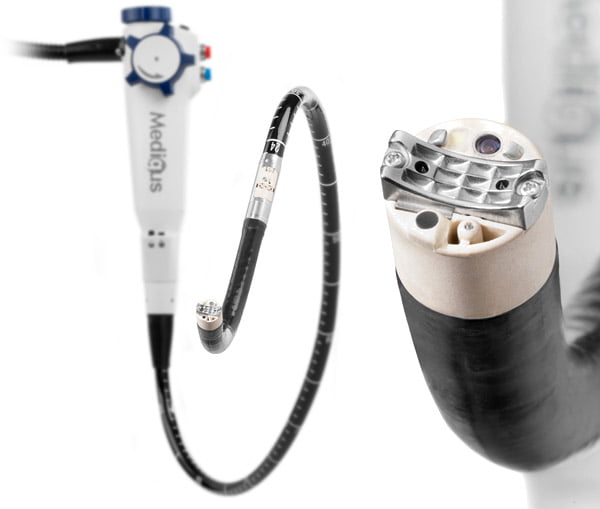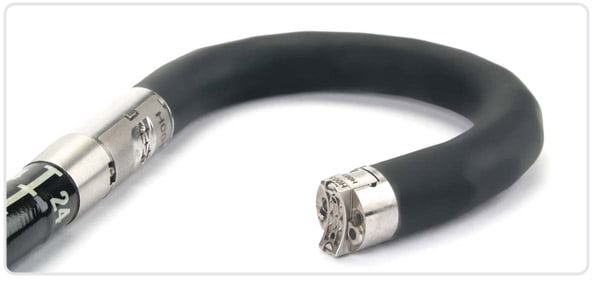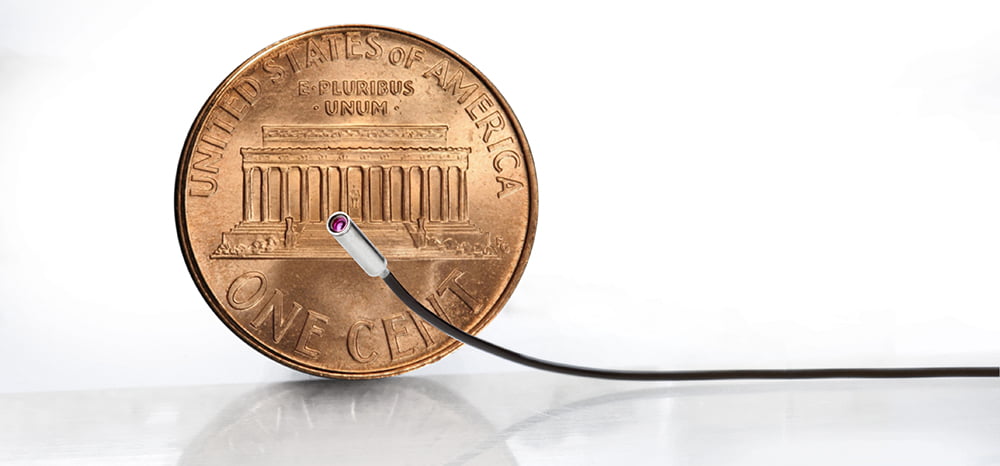This article was first published on The Times of Israel and was re-posted with permission.
NASA has adopted Israeli “Martian”-style technology for a robot to inspect equipment in deep space. The Visual Inspection Poseable Invertebrate Robot, or VIPIR, is an articulating borescope tool designed to deliver near and mid-range inspection capabilities in space to enable repairs of equipment using robots on unmanned spaceships — and a tiny camera from Israeli medical device company Medigus will be giving VIPIR its power of vision, allowing technicians on Earth to get a close-up look at equipment.
 It’s like “War of the Worlds,” where Martians send machines down to Earth with roving “eyes,” cameras attached to the end of a flexible tube, nearly a meter (3 feet) long, to report back to the Martians on what is going on Earth. In the films (1953 and 2005) and in the original 1898 Wells book, the aliens use machines with cameras to peer around, under, and into any and everything, seeking out humans to destroy.
It’s like “War of the Worlds,” where Martians send machines down to Earth with roving “eyes,” cameras attached to the end of a flexible tube, nearly a meter (3 feet) long, to report back to the Martians on what is going on Earth. In the films (1953 and 2005) and in the original 1898 Wells book, the aliens use machines with cameras to peer around, under, and into any and everything, seeking out humans to destroy.
SEE ALSO: Israel Ushers In Revolutionary Cleantech Transportation With NASA’s skyTran
The tiny camera NASA will be using for its other-worldly robot project, called the micro ScoutCam 1.2, comes from the world of medicine, not Mars, and it’s already in space. It’s made by Medigus, an Israeli company that specializes in developing minimally invasive endosurgical tools and imaging solutions. For example, Medigus makes a system that enables doctors to examine, diagnose, and treat GERD (Gastroesophageal Reflux Disease) — via the mouth, allowing patients to be treated without the need for surgery. The Medigus MUSE system for GERD includes a surgical stapler, ultrasonic sights for accurate positioning, and a miniaturized video camera, all in a single instrument.
 MUSE is a clear precursor to the camera technology being used in VIPIR. The MUSE camera also sits on the end of a flexible tube, and can be controlled by doctors via a console instrument. The MUSE camera, at 3 millimeters diameter, is a marvel of technology, but the camera being used in VIPIR, at 1.2 millimeters, is the smallest in the world. The camera can deliver back to Earth a ~100-degree field-of-view image with a 224 x 224 pixel (0.05 megapixel) resolution. While the number of pixels may sound small compared to today’s commercially available digital cameras — it’s ideal for the close-range inspection jobs VIPIR will be doing, NASA said. With the Medigus camera, mission controllers can zoom in to resolve worksite details as tiny as 0.02 inch – thinner than a credit card. The tube itself can rotate up to 90 degrees in four opposing directions.
MUSE is a clear precursor to the camera technology being used in VIPIR. The MUSE camera also sits on the end of a flexible tube, and can be controlled by doctors via a console instrument. The MUSE camera, at 3 millimeters diameter, is a marvel of technology, but the camera being used in VIPIR, at 1.2 millimeters, is the smallest in the world. The camera can deliver back to Earth a ~100-degree field-of-view image with a 224 x 224 pixel (0.05 megapixel) resolution. While the number of pixels may sound small compared to today’s commercially available digital cameras — it’s ideal for the close-range inspection jobs VIPIR will be doing, NASA said. With the Medigus camera, mission controllers can zoom in to resolve worksite details as tiny as 0.02 inch – thinner than a credit card. The tube itself can rotate up to 90 degrees in four opposing directions.
SEE ALSO: ‘Israel Will Land Unmanned Vehicle On The Moon By 2015′
VIPIR and its attached Medigus camera are to be used on the International Space Station orbiting Earth. It was sent last week with the European Automated Transfer Vehicle-5, which docked with the space station. VIPIR will allow mission controllers to try out various remote-repair technologies they have been developed over the past several years by NASA’s Robotic Refueling Mission (RRM), and Dextre, the Canadian Space Agency.
To continue reading this article on the TOI site, click here.
Related posts

Editors’ & Readers’ Choice: 10 Favorite NoCamels Articles

Forward Facing: What Does The Future Hold For Israeli High-Tech?

Impact Innovation: Israeli Startups That Could Shape Our Future




Facebook comments